




Special Sections

Pages
Pages
Page









Pages
Pages
Page


As I sit down to write this, My 91-year-old mother calls from Florida to give me the weather report. I think she just likes to rub it in, or most likely, she wants me to move down there. And I admit, I’m tempted after the temperature update she reports: It has been sunny and 85 degrees for days on end since the vernal equinox. There is no spring in Florida. It goes from winter-ish (if you can call it that) to summer.
Well, I told her, tongue firmly in cheek, there is barely spring in New England either. Since the vernal equinox on March 20, it has been stubbornly gray. And damp. And cold. Winter here does not easily give up the ghost. Spring comes reluctantly at the end of May, and sometimes winter rears its head one last time for a good laugh and a surprise Mother’s Day snow flurry.
Still, when spring does finally arrive, for a few short weeks from late May to mid-June, it is glorious, invigorating, and energizing. And I wouldn’t trade it for all the 85-degree Florida days.
And what do New Englanders do with all that pent-up energy? Spring cleaning ... indoors and out. I’ve already started purging things I don’t need in my kitchen: duplicate spatulas, bowls and a plethora of coffee mugs.
The outside, for now, will wait since I’m heeding the advice of Michele Chalice, our In the Garden writer, who says that leaves, left alone, are good for the soil and many species of beneficial insects nesting birds feed on in spring.
But there’s still plenty to plan and do. Turn to our Spruce Up for Spring special section starting on page 23 for environmentally friendly clean-up tips and local businesses at the ready to help you get your home and garden in shape for the season.
Happy Spring!
Marcia Passos Editor & Founder, atHome Magazine
atHOME MAGAZINE
ISSUE #29 • SPRING 2023
Cover Image by Kelly Fletcher
PUBLISHER
Backporch Publishing LLC
FOUNDER/EDITOR
Marcia Passos
CONTRIBUTORS
Michele Chalice
Patricia Herlevi
Nancy McGartland
Denise Mazzola
Rob Parisi
Caroline Tremblay
PHOTOGRAPHY
Kelly Fletcher
ADVERTISING SALES: jeanne@atHOMEnewengland.com
CONTACT US
atHome Magazine
16 Russell Street • Keene, N.H. 03431 603-369-2525
marcia@atHOMEnewengland.com www.atHOMEnewengland.com
atHome is published four times a year (Spring, Summer, Fall/Holiday and Winter) by Keene, N.H.-based Backporch Publishing LLC. atHome is a consumer publication that highlights the homes and gardens of residents in tri-state area of New Hampshire, Vermont and Massachusetts.



This magazine is copyrighted. No part of this publication may be reproduced without written consent. The views expressed in atHome magazine do not necessarily reflect the views of its advertisers, publisher or editor. While every effort is made to provide accurate information, neither atHome nor Backporch Publishing LLC assumes responsibility for any errors or omissions
Learn more about Backporch Publishing LLC at www.backporchpublishing.com
A one-stop-shop featuring artisan quality gifts and original artwork




56 Main Street (Rt. 12) Ashburnham, Massachusetts
(978) 827-6211 • ccgiftgallery.com

Open Tuesday to Saturday, 10am-6pm
V i s i t G e o G r a p h i c G e m s o n l i n e o r a t a n y o f o u r l o c a l r e t a i l e r s f o r e a r r i n g s , p e n d a n t s , r i n g s , b a r r e t t e s , k e y c h a i n s & m o r e m a d e f r o m v i n t a g e N a t G e o p a g e s !
C r e a t e d l o c a l l y i n K e e n e , N e w H a m p s h i r e .
w w w . G e o G r a p h i c G e m s . c o m








Artists relocate to Vermont for good reasons — the lighting, pastoral landscapes, rugged forests and wildlife. Alistair McCallum relocated to Vermont from Colorado in 1985. A year later, he started selling his photographs.



During the past 35 years, he has built an impressive catalog of photography and paintings. His work is represented in several galleries throughout Vermont, including the Depot Street Gallery in Ludlow and Vermont Artisan Designs in Brattleboro. Shutterbug Magazine, Artscope and Vermont Sunday Magazine have featured McCallum.
A master of black and white and colored photography and painting, McCallum reveals the magic of Vermont’s natural beauty.
When did you first start pursuing photography, or when did it catch your interest?
I started photographing in 1972 when I was 15. I was interested in astronomy, and my parents gave me a 35mm SLR to take astronomy photos. I quickly fell in love with photography and gave up the astronomy. I learned some of the basics of darkroom work in high school and went on to set up a lab in my parents’ basement. I spent many nights printing images of the New Jersey coast where I lived and street scenes of New York and
Boston. I went on to study photography and filmmaking at the Rochester Institute of Technology, from which I graduated with a BFA in 1979.
Who were your influences then and now?
I was inspired by the landscape work of Edward Weston, Wynn Bullock, Ansel Adams and the photojournalism of W. Eugene Smith. I saw an Ansel Adams exhibit at the Metropolitan in New York while in high school, which amazed me and gave me an idea of how beautiful a black and white photograph can be. I remember thinking to myself, “How does he do that?” I also was inspired by the collection of photographs at the Museum of Modern Art and the International Center for Photography in New York. As far as contemporary photography, I enjoy the work of Paul Caponigro.
Where are your origins? What inspired you to relocate to Vermont?
I was born and raised in Atlantic Highlands, New Jersey, a small town on the water about an hour south of New York. After attending RIT, I headed west and spent several months traveling and camping in Wyoming, Utah and Arizona before settling in Colorado, where I met my wife, Joan. We moved to Mount Holly, Vermont, in 1985, and I started selling my photography here a year later.
Do you use digital or analog photography?
Of course, my work was originally analog. In the late 1990s, I began experimenting with digital printing, scanning my negatives and printing with custom black and white inks in large format inkjet printers. I currently continue to shoot analog for most of my black-and-white work, along with some digital. Most of my color work is digital, as is the printing process.
What kind of cameras or formats do you use?
I shoot black and white film with a pair of Pentax medium format that I bought over 30 years ago. They make negatives measuring 6x7 and 6x4.5 cm in size. I also have a collection of canon digital SLRs and lenses that I use for most of my color.
What do you enjoy most about black and white photography?
I like the way black-and-white photography emphasizes and enhances light, shadow, shapes and textures. Going out and exploring the back roads looking for new images is probably the most enjoyable and exciting part of the process, as is editing and printing the images. I enjoy heading out into the winter weather to photograph, particularly in black and white. When the sun is low and casting shadows across the snowy landscape is a favorite time for me. I also like to photograph during snowstorms. When there’s a good snow coming down, it transforms and adds depth to the landscape. I find myself shooting more color in the summer and am drawn to the warmer light on the fields, mountains and lakes. In winter, I look for color shots that are almost black and white, apart from a splash of color on a barn or dried leaves on a tree.

On the topic of your paintings, when did you begin painting?
I first started painting in the 1990s but stopped as I was getting too busy with my photography and family life. I picked it up again seven years ago. I find that painting meshes well with my photography.
Do you paint from photographs, and what is your process?
When I go out now, I’m looking for both photos and painting subjects. My camera is basically my sketchbook that I work from back in my studio. I’m not so interested in being totally realistic with my painting. I feel like I can do that with my photography. I find it satisfying and rewarding to work in a new media.
Learn more at: alistairmccallum.com & mccallumfineart.com







Since 1875 the Kentucky Derby has not only been the fastest two minutes in sports but has evolved into an amazingly unique experience for entertaining and gathering, unrivaled in the spring. While nearly 1,000 miles from the Monadnock Region, the nation turns its eyes to the heartland for those few intense moments every year.

So why not enjoy it at your very own home, surrounded by those near and dear? If you love fashion, food and fun, consider hosting our version of this fun party: the Keene-Tucky Derby.

Here are some ideas:
It’s all about the hat! A quick Instagram search of #derbyhats reveals 65,000+ exotic entries, no two being alike. Whether you find, buy or make the hat, it always makes a statement!
DON’T FORGET THE ‘JAR-CUTERIE’
Jar-cuterie is taking the party scene by storm. Hosts can delight their guests with single-serving charcuteries loaded into small Mason jars. It’s the perfect snack for making your way around the social event. You can include your favorite meats, cheese, nuts, fruits and veggies. Also, consider the following: fried chicken, pimento-cheese tea sandwiches, and deviled eggs with country ham.
No Kentucky Derby party would be complete without a proper Southern spread. We have a recipe for you to follow (next page) that will win the crowd over. Burgoo is a hearty Southern stew featuring a minimum of three meats (usually some combination of pork, chicken, beef, sheep or wild game) and delicious vegetables, including corn, Lima beans, cabbage, potatoes, tomatoes, carrots, onions and more, in a tomato base with a variety of spices and flavors. By the way, the tell-tale sign of an excellent Burgoo is that you can make the spoon stand on end in the bowl!
The fun part is that after all the drama and excitement of the race, a pickup may be called for, like Bourbon Balls and Bourbon Pecan Pie. Mocktails and cocktails, like the legendary Mint Julep, are the perfect complements to the meal.
In conclusion, don’t be afraid to throw that derby party. Think “Superbowl of the Spring,” make those memories, and meet new faces!
If you want to get a feel for this event but aren’t sure you want to commit to hosting a party, PoshHaus will have an open house at our new location all day on Kentucky Derby Day, on May 6, 2023, with prizes for the best derby hat and raffles for swag.
Scott-Farrar at Peterborough has been providing compassionate care to seniors of the Monadnock Region for over 113 years! Some of the great benefits of living in the Scott-Farrar Community today include:

• Chef prepared meals

• Staff onsite 24/7
• Happy Hour, yoga, movie matinees, gardening & more

• Housekeeping & maintenance
• Medication & transportation assistance

• Individualized care plan
• Onsite physical, occupational and speech therapy services And much more!
Call us today 603-924-3691 to schedule a tour of Scott-Farrar at Peterborough.


Instructions
Add the oil to a 9 quart or larger stock pot over medium heat. Salt and season the meats as desired while moving the meats. Continue until browned.

Add approximately 6 cups of water and the 32-oz chicken stock. Turn to medium-high heat until a boil is reached, and then simmer over medium-low heat to a gentle simmer for two hours.
Remove the meat pieces to a large bowl, and strain the broth mix into another large stock pot.
All meats in the large bowl must be processed to remove all bones and nonmeat solids.
Add more oil as desired in a large saute pan and begin sautéing the onions, carrots, bell pepper and celery.

Add more oil or seasonings as desired.
‘KEENE’-TUCKY BURGOO
Prep Time 20 Minutes
Cook Time 4 hours 10 Minutes
Total Time 4 hours 30 minutes
Servings: Yields about 20 twelve-ounce bowls
Ingredients
● 3-5 tablespoons your favorite oil (vegetable or avocado)
● 4-5 pounds of chicken quarters bone-in
● 4-5 pounds of pork (one-half Boston butt or country ribs)
● 3 pounds of beef (chuck roast, bottom round, stew meat or other)
●1 large onion
●1-2 bell pepper (your choice of color)
● 3 carrots
● 3 stalks of celery
● 5 cloves of garlic
● One 32-oz carton chicken stock
● Two 12-oz cans of low-sodium V8 juice
● One 26-oz can of tomato puree
● One 14-oz can of diced tomatoes
● 3 large potatoes
● 1-1/2 head medium cabbage
● One 14-oz bag frozen gold corn white corn
● One 14-oz bag frozen baby Lima beans
● 1 cup of ketchup
● 3-oz of high-quality apple cider vinegar
● 3-oz of Worcestershire sauce
● 1-oz of fish sauce (optional)
● 1-oz of Tabasco sauce
● Salt and pepper to taste
● 2-oz Tony Chachere’s Creole Seasoning
Once veggies are browned, add garlic cloves and cook for another 30-45 seconds. Set veggies aside for a moment.
Combine all meats and veggies into a large stock pot over low heat. Add the stock. Combine previously cooked vegetables, broth, and add the vinegar, cabbage, tomatoes, potatoes, V8 juice can, Worcestershire sauce and fish sauce.

Raise heat to medium for 20 minutes while stirring constantly. Once a boil is reached, lower heat and continue to stir.
Add the corn and lima beans and continue to simmer over medium heat for another 20 minutes.
Remove from heat for 10 minutes to rest, then serve.
You may want to have some Mason jars on hand for storage. Fill with 2” of space from the top to store in the freezer. Considerations for vegan could be removing all meats and using jackfruit, adding more vegetables, or even pinto, black or butter beans.
About the Author
Rob Parisi is the owner/operator of Keene-based PoshHaus. His newest mission, Shop.Design.Build brings local homes to life by remodeling and renewing kitchen spaces throughout the region. The first stage is in the new PoshHaus test kitchen, located at 104 Emerald Street in the old Kipco building in Keene, NH. Built in 1910 and empty for over five years, the place is finally vibrant and back to life. Learn more at poshhaus.com.
The FIRST Wednesday every month
April 5 | May 3 | June 7 | 1-3pm
Family Resource Center at HCS 312 Marlboro Street, Keene


The THIRD Wednesday every month
April 19 | May 17 | June 21 | 1-3pm HCS Charlestown, 33 Arborway

Come to Walk-in Wednesdays for a confidential, free of charge discussion of services that are available for your family. From Healthy Starts to Hospice care, HCS has services for all ages! Can’t make Walk-in Wednesdays? Call us any time!

www.HCSservices.org | 603 - 352 - 2253
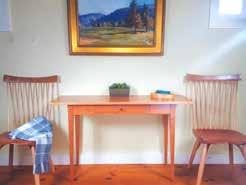

SpoffordUpholStery@gmail.Com

Renowned
additions or any changes to the look of the building, we weren’t to copy the existing style but use new material and designs that didn’t replicate the past.
What were the structural restrictions?
Glass-blower Robert DuGrenier and his wife Katherine purchased the Woods-Wheelock house (located at 1096 VT Route 30, Townsend, Vermont) in 1997. They have since transformed the property into a glass art palace. We spoke to the couple about this historic home and what it was like to purchase and renovate a house listed with the National Historic Places registry.
What was the process of purchasing a home listed with the National Historic Places Registry?
Because we were taking a residential building and turning it into our glass-blowing and design business with a retail gallery, we had to go through Vermont’s Act 250 permitting process. Since the house was on the National Historic Register, the Vermont Division of Historic Preservation had some control as to what and how we renovated it.
What restrictions did you face with converting the residential home into a place for business?
There were restrictions dictated by the archeology division as to putting up any new structures or additions. They marked areas of ground that couldn’t be disturbed. There was also a design mandate that if we were going to make
For instance, when we renovated the barn (which had few windows when we purchased the property), I had to show the historic preservation team where there had been existing windows; what my new window plan would be since they didn’t want us to put in many windows. The windows permitted had to be contemporary in design — not six-oversix window panes as in the main house but rather mullionless windows. Similarly, with the carriage shed attached to the main house, we weren’t allowed to mimic the window style used in the house, so large, double-hung contemporary windows with no mullions were used.
What year was the house built?
The original house was built circa 1780 and was a capestyle house with a kitchen wing and an attached carriage shed. In 1858, the main cape was taken down and doubled in size to a large center hall Federal-style home with 10’ ceilings and a grand staircase reaching the third floor. The building materials, i.e., the moldings, doors, carved fireplaces, floors, etc., were said to have been crafted with southern pine by enslaved people that the owner of the house had at their plantation in Mississippi; transported to Vermont by sea and then over land. The front porch was added with four grand columns in a southern style commonly seen in Natchez, Mississippi and also made from southern pine.



Who was the architect, and what was the architectural style of the home?
The house has been referred to as the Woods-Wheelock house. Dr. Woods was the husband of Ruth Hazeltine (whose father settled the town of Townshend). The home and farm originally encompassed 250 acres. Their sons moved to Mississippi and started a millinery business, which became quite successful. One of the sons moved back to Townshend with his new southern bride, her influence and the family’s money and enslaved people. The rebuilt house was more southern in style, with high ceilings, a wide front porch with carved columns, and an open staircase reaching the third floor.
What was the significance of the Red Gate Farm? Was it a gentleman’s farm or a full-working farm with livestock and farm fields?
The Red Gate Farm got its name in the later 1800s from a new owner of the farm who took in overnight guests in the 1920s and 1930s — this was when Vermont had become a tourist destination with a train arriving in town daily.
What is the connection between the American Impressionist painter Theodore Robinson and the Red Gate Farm?
Theodore Robinson rented the house in 1894 from spring through fall. He had cousins living in town who helped arrange the rental. And his parents were from Jamaica, VT, although he was raised in Wisconsin. He had lived in Giverny, France, for 10 years and became friends with Claude Monet. He eventually moved back to NYC and wanted to see if the Vermont landscape would provide inspiration for a different-looking impressionist style. Through the Arts Students League in NYC, he invited a group of female artists interested in studying with him to join him in Vermont. In addition to the classes held in the house, they painted in plein air around the Townshend area.
What are the benefits and drawbacks of owning a historic registered home?
The benefits include working in a beautiful space that has a long and interesting history; that serves as a fitting backdrop to my glass art. I love history and serve as the vice president of the Townshend Historical Society, whose office and collection are also housed here. The drawbacks were the limitations mandated by VDHP and the fact that I had to get approval for any renovations I wanted to make. There were also extra costs involved in those approval processes.
I love the gracious lines of the house, the front porch with its columns, the high ceilings inside, and the old maple trees surrounding the house. We purchased the property after years of driving by and admiring this stately home. When the rent for our NYC studio increased tenfold in 1997, we checked to see if the property fit our glass studio and design business needs. It did, and so we moved to Vermont full-time.

According to the National Parks Department website, “The National Register of Historic Places protects America’s historical and archaeological resources.” While we think of historical as buildings from the Colonial Era or the Victorian Age, the place only needs to have been created a minimum of 50 years ago. This means that any structure or place built before 1971 could qualify for the historic preservation register if it retains its original character and integrity. The best place to start is the National Park Department website, https://www.nps.gov/subjects/nationalregister/how-to-list-a-property.htm. Did you know that more than 96,000 properties listed (by the end of 2020) in the National Register represent 1.8 million contributing resources: buildings, sites, districts, structures, and objects (as mentioned on the NPD website)? These places range from tribal to archaeological to bridges, entire towns or town blocks, farms, homesteads, houses, churches, and other structures. They are designated by a plaque that appears on the property’s location. “Almost every county in the United States has at least one place listed in the National Register,” according to the NPD website. Research other historic registered properties on the website and read through the guidelines and publications before filling out a nomination form for your property. Owning a historic registered place comes with restrictions and expenses mentioned in the guidelines and regulations. It’s best to start with your state’s historic preservation program or with your local historical society.

It’s a house with an unexpected story, which, honestly, makes it a perfect match for owners Jeanne Demers and Richard Christiansen, who have quite a story of their own. Before buying their place in Walpole in 2018, they were living in New York, where the pair sparked a whirlwind love story.
While house sitting in the Hamptons, Jeanne was introduced to Richard by friends who met him at the health food store. He’d offered to give them a tour of the magnificent estate where he’d been caretaker for the last 15 years. Jeanne tagged along, perhaps not expecting to meet the man she would call her husband in less than a year. But that’s exactly what happened.
“We blasted off that day; it was fun,” Richard recalls. “As soon as I met Jeanne, she moved in, basically.”
They tied the knot after seven months and lived together for two years in the estate’s lavishly furnished $8 million guesthouse. The owner, artist Dina Recanati, was rarely home, so they had the place mostly to themselves.

But when Recanati decided to sell and relocate to Israel to be near family, the search for a new home was on for Jeanne and Richard. They both had New England roots and wanted to head further northeast, so they watched the real estate market closely, trying
to figure out which homes were pending, under contract, or actually available in the fast-moving market.
When they came upon the Walpole home where they now live, they immediately contacted the real estate agent, hopped on a ferry, drove to New Hampshire, and wrote a check then and there.
“It was the only house we looked at,” Richard says.
“It was like it hit all the boxes and the fact that Walpole was such a cool town — we stopped in at Burdick’s and had lunch, and we were like, wow!” Jeanne says.
Despite its charm, the three-bedroom, twobathroom house was a bit of a fixer-upper. For instance, the main doorway had a giant puddle in front of it, and several trees lurched over the home.
But the duo immediately knew it was where they wanted to land. And what they brought with them was wild.
“We got the choice of all the furniture from the two houses where I was working,” Richard notes.
Though the pieces had been offered to Recanati’s family, nobody wanted anything, so it was just going to go.
“They were taking shipping containers full of her artwork and other stuff, so they had all the opportunity to just stick the furniture in, but they
didn’t,” Richard says.
Once he and Jeanne were settled in Walpole, he got the chance to connect with Recanati over the phone, and she expressed how nice it was that they had ended up with several remarkable furnishings.

However, blending their new house with the furniture turned out to be a bit more complex than anticipated.
“This is a reproduction house. It looks like it was built a long time ago, but it was actually built in the 1980s, and they repurposed all kinds of old stuff,” Jeanne describes.
Exposed antique beams, wide pine flooring, a slate roof, and four brick fireplaces all give the historic

setting authenticity.
The family that originally built the house, the Burroughs, “did things by the numbers,” Jeanne says. “It’s a replica of a Colonial, and so Colonials are 13 by 13 size rooms.”
Each space in the home is based on that math, measuring 13 by 13 or 13 by 26. The Burroughs became known for building these intricate houses throughout the area.
“This was one of the first ones they did,” Richard says, noting that he and Jeanne had the pleasure of meeting the family last summer.
Because of the historically accurate


size of each room, the inherited furniture from the estate seemed to overtake the space itself. But, during the pandemic, Jeanne and Richard were patient and brought a few pieces in at a time and experimented.
What they learned was to scale back. For instance, in front of the main fireplace, which now features an inset, custom-made, soapstone woodstove, there are two gorgeous white chairs with mismatched pillows. But the accompanying, down-filled couch lives in the next room.


“It’s a statement piece rather than having a bunch of pieces,” Jeanne notes.
The result is an eclectic home that is upscale, comfortable, yet refined — there’s an immediate sense of style when you enter.
“It’s kind of like billionaire Bohemian,” Jeanne says with a laugh.
Melded with the grandness of the estate pieces is a creative flair that shows up in handcrafted light fixtures from Etsy, splashes of color, and intriguing works of art.
Upstairs, the bedrooms show the same attention to detail, featuring a quilt made in India and an incredible canopy bed (though the finials wouldn’t quite fit beneath the ceiling and had to be omitted). The main bedroom also has a lovely glass door, which the couple added to bring in their furniture. The historic-style staircase was too narrow.
All winter long, they’ve been nestled in, but spring is when the magic
will really begin. Richard’s true role during his decades as a caretaker was gardening. It’s a passion for him, and he is artful in his work around the property, with is bordered by an impressive ravine that zig-zags off behind the barn.
While Jeanne is always game to help plant bulbs and pull weeds, the office is where her passion comes out. She is an experienced writer and coach specializing in neuro-linguistic programming and EFT tapping (Emotional Freedom Technique) to resolve long-term patterns that hold people back. In March, she and a colleague, Natalie Glynn, released a new coaching program called The Choose Your Life Method™ after months of recordings and video calls, all based in her little New Hampshire office.
It’s a far cry from the Hamptons, but with zero hesitation, Jeanne says, “It just feels good.”
Happy to have found a home and each other,

Looking at the behavior as a symptom of a bigger or underlying issue, will help you focus your attention on the whole dog and start to find real solutions for you and your dog.
Here’s the thing: more socializing of your dog around other dogs and/or people she doesn’t know is the worst way to stop her growling, barking and lunging behavior.
“WHAT?”
I know, I know, everyone tells you, “You need to get her out more,” or “You didn’t socialize her enough.” Heck, your veterinarian has probably said this to you, your groomer, family, friends, and even people on the street. Even your college roommate has called to tell you this.
If socializing more were the answer to the aggression around dogs and people, then everyone who has socialized their dog would not be struggling with aggressive behavior, would they?
If socializing more were the magic answer it is made out to be, then your dog would be perfect because I know you’ve spent countless hours socializing her.
Yet, here you are, still being blamed and shamed, still being judged, still feeling embarrassed, frustrated and confused.
Did you know that 99% of dog aggression is based on fear? Meaning
your dog is afraid of other dogs, people she doesn’t know, new environments, children, or all of these.

Let’s step back a minute and think of something that you are afraid of, snakes? Spiders? Lightening? Maybe birds? For me, it’s spiders.
In my mind, not all spiders are created equal. I can barely cope with small, light-in-color and slow-moving spiders. Outside spiders are easiest because I know they will not end up in my shoes or other personal spaces. But spiders that are in my house? They get my adrenaline going. I know it’s ridiculous, but it’s a fact.
So, now that you know I’m afraid of spiders imagine taking me to a spider museum or a spider petting zoo all to “get me over it.” Or to show me there is nothing to be afraid of.
No, thank you!
Over-exposure to the thing that frightens me does not help me “Get over it.”
It’s the same for your dog. Dragging
enrolling in doggie daycare or taking her to Home Depot or the pet store is not helping her to feel better. It does not help her to feel safe. And it just keeps the adrenaline and cortisol surging through her system.
Looking at the whole dog is the only way to help your reactive, aggressive, naughty dog.
Remember, behavior is a symptom of an underlying issue. When we focus on stopping the annoying, frustrating and aggressive behavior, we miss the big picture and cause our dog more stress and confusion.
Here is a personal example. For the past







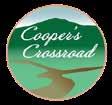
several years, whenever I got sick, it developed into a cough. I have serious trouble breathing ... as in call 911 trouble. Every time I was transported to the ER, I was given an antianxiety medicine and told I was having a panic attack. I have no history of anxiety. I do not take any medication, and this “not breathing” situation only happens when I’m sick. I even discussed this ongoing situation with my primary care doctor, yet I never received a diagnosis.
Late last year, I was sick and coughing and was desperate to prevent a 911 call with an ER visit, so my partner, Amy, drove me to Convenient MD. I packed all the over-the-counter medication I was taking. The doctor asked me a lot of questions and dove into my complete medical history. She was the first person to really look at the whole me! Diagnosis: Viral onset asthma! She told me to stop all the over-the-counter medication. She explained it was the worst thing I could do!

I can’t tell you how great it felt to have a diagnosis with a plan.
It also felt scary as heck to stop doing what I had been doing, but I followed her directions and have been out of ambulances and the ER ever since.
In another example, I received an email about a 12-yearold dog who was growling at a young child in the home, but the dog was growling when the child was across the room and nowhere near her. After a vet visit, it was determined the dog had arthritis (undiagnosed until now) and was very uncomfortable. Pain is very common in aggressive, reactive

dogs and can contribute to naughty behavior. As soon as the pain was under control, the dog’s behavior improved.
So, the next time you feel frustrated and confused a bout your dog’s behavior, be sure to ask, “Why is my dog behaving this way, and what happened to him?”
Looking at the behavior as a symptom of a bigger or underlying issue will help you focus your attention on the whole dog and start to find real solutions for you and your dog.
Denise Mazzola is the owner of Denise Mazzola’s Everything Dog. She has been working with people and training dogs for over 30 years. Everything Dog provides services to clients throughout the Monadnock Region of NH by offering private lessons, group classes, board and train, as well as day training services. Denise has been published in the trade journal, Chronicle of the Dog, and writes a monthly column for Everything Dog’s Monthly Newsletter. She also hosts a monthly “Ask the Trainer” radio show on WKBK. Denise lives in Keene with her life and business partner, Amy Willey CPDT-KA, and they share their home with two dogs. She has three adult daughters and two grandsons. For more information, visit www.everythingdognh. com. On youtube at Everything Dog.



Structural Restoration, Repair and/or Replacement of Damaged Foundations, Sills, Joists & Framing Timber

New Foundations Constructed Under Existing Buildings
Barn Frames, Timbers & Barn Board for Sale
As our spring bulbs awaken, we have new choices for a healthier, more lovely and lively garden this year. We are learning that our gardens, plants and pollinators need exactly what we thought we should “clean” every year. Surprisingly, less work for you means more health and vitality for our gardens and our environment. Even more encouraging, there are simple steps we can choose this season to increase the number of native bees, butterflies, songbirds and fireflies at home. This encouraging news can bring a sprightly step to our first forays into our gardens.
Recycling & Dismantling of Old Barns & Reassembly
Tasteful Remodeling of & Additions to Period Homes



The leaves we thought we were supposed to rake and take out from our gardens protect the bumblebee nests we want for a season of wonderful fruits and flowers. In the areas below our oaks and maple trees, a layer of leaves protects the chrysalis and cocoons of the butterflies formed in these host trees’ branches last season. Plus, the leaves we leave on the ground will fertilize our gardens with precisely the nutrients that our plants, trees and shrubs require. Really



We also thought we were supposed to remove last year’s perennial stalks. But in fact, cutting them instead to varying heights between 12-24” creates nesting sites for over 400 species of threatened native bees. Won’t the stalks look unkempt? No worries, the new leaves and stems will soon hide the older stalks from all but our important native pollinators for their two-year nesting cycle.







Well, bark mulch can contain deadly chemical preservatives from former wood pallets. But a thin, top layer of certified bark mulch can help us transition to this new world of healthier, less resource-intensive garden maintenance. Shredded bark mulch laid too thickly can reduce the amount of rain and oxygen plant roots need. Be sure to remove any mulch “volcanoes” from your trees carefully so that no mulch touches the bark of a shrub or tree.






Did you know that a mother bird needs 6,000-9,000 unpoisoned caterpillars to feed one clutch of babies? This can be your spring to break old, destructive and deadly habits of poisoning the caterpillars and mice that our songbirds, owls and hawks need to survive. It is time to bring all our pesticides, herbicides, insecticides and poisons to your community’s next Household Hazardous Waste disposal day.









Wasps are important pollinators as well. There are better solutions than spraying poisons around our homes, however. Did you know that a simple, crocheted, decoy “nest” hanging in the corner of the porch (see photo, right) has provided two seasons of a wasp-free porch, porch furniture, porch eaves and porch light fixtures. The neutral color of this Etsy purchase is a small, aesthetic price to pay for the completely effective “occupied” sign. I hear of, but have not tried, a similar paper version called “Get Lost Wasp.”
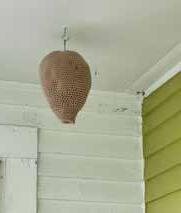

According to the research done in the Department of Physics at Florida Atlantic University, “Light pollution does not just affect plants’ cycles directly; it also affects them indirectly by interfering with the life cycles of their pollinators or other animals that interact with them.” Fireflies, bees and birds will benefit from you choosing to instead mount the now easily available and inexpensive motion detector and solar downlight fixtures for walkways and entrances.

Don’t bother replacing or putting out your bug zapper. Recent research has shown that their satisfying zap kills less than 0.25% of mosquitoes. But these zappers kill 99.75% of other more beneficial insects that, once again, feed our hungry birds.
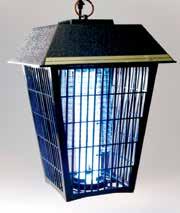
Consider keeping your kitties inside this season. Poland has recently declared that household cats are an invasive species, and for good reason. Our sweet companions are also highly effective bird killers. In the United States alone, outdoor cats kill approximately 2.4 billion birds every year.


Spring is a wonderful time of year for new choices. I hope these options bring you a new season of less work, more beauty, more health, and more life in your garden!

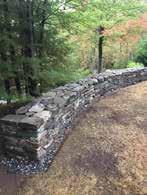





Finnell Roofing, LLC has been serving Brattleboro, VT; Keene, NH and all of New England for over 30 years. Our fully trained service technicians are qualified to do both commercial, residential and industrial roofing, and always work well with other area contractors. We offer year round installation to meet your needs when they occur.









ACCOUNTANTS
Anderson & Gilbert 295 Park Ave. Keene, NH 03431
603-357-1928 taxfolks.net
ART/POTTERY
Brattleboro Clayworks
532 Putney Road Brattleboro, VT 05301 802-254-9174 brattleboroclayworks.com
ART FRAMING
Indian King Framery
149 Emerald St., Ste. D2 Keene, NH 03431 603-352-8434 indiankingframery.com
BOOKSTORE
The Toadstool Bookshops of Southwestern NH Keene • Peterborough toadbooks.com
BUILDING/ CONSTRUCTION CARPENTRY/ REMODELING
C hris Parker Building & Restoration
4657 Coolidge Hwy. Guilford, VT 05301 802-257-4610 oldbuildingfix.com
Creations in Stone
147 S Winchester St. Swanzey, NH 03446 603-357-2260 creationsinstoneofkeene. com
Eco-Logical Building Solutions
27 Frost Hill Road Marlborough, NH 603-876-4040 ecologicalbuilding solutions.com
Finn Property Maintenance
21 Sugar Hill Road Swanzey, NH 03446 603-892-1192
finnproperty maintenance.com
JA Jubb
38 Swanzey Factory Road Swanzey, NH 603-762-0669 jajubb.com
K+J Dean Builders, Inc.
20 Pine St. Swanzey, NH 03446
603-499-3561 kandjbuilders.com
Niemela Design Builders
118 Craig Road Dublin, NH 03444 603-563-8895 niemeladesign.com
Monadnock Design Studios PO Box 128 Winchester, NH 03470 757-272-2924 monadnock.design

DESIGN/SURVEY
Huntley Survey/Design
659 West Road Temple, NH 603-924-1669 huntleysurvey.com
EDUCATION
Mountain Shadows School
149 Valley Road Dublin, NH 03444 603-563-8170 mountainshadows school.com
FIRE PROTECTION Life Safety Fire Protection PO Box 432 Keene, NH 03431 603-352-0202 lifesafetyfire.com
FLOORING
Monadnock Flooring 1024 Route 12 Westmoreland, NH 603-399-4004 monadnockflooring.com
FOOD COOP
Monadnock Food Co-op
34 Cypress Court Keene, NH 03431
603-355-8008 monadnockfood.coop
FURNITURE
Shaker Style
Handcrafted Furniture 292 Chesham Road Harrisville, NH 03450 603-827-3340 shakerstyle.com
GARDEN/LANDSCAPING
Achilles Agway Six Locations achilleagway.com
Allen Bros. Garden Center & Nursery 6023 US-5 Westminster, VT 05158 802-722-3395 allenbrothersfarms.com
Coll’s Garden Center 63 North St. Jaffrey, NH 03452 603-532-7516 collsgardencenter.com
DS Stone & Garden Scapes Greenfield, NH 03047 603-769-7173 dsstoneandgardenscapes.com
Ecoscapes
121 Pond Brook Road W. Chesterfield, NH 03466 603-209-4778 ecoscapeslandscapes.com
Healthy Home Habitats Keene, NH 603-313-9163 healthyhomehabitats.com
Home-Land Landscaping Harrisville, NH 603-827-3019
Maple Hill Nursery & Greenhouses
197 W Swanzey Road, Swanzey, NH 03446 603-357-2555 maplehillnursery.com
Windsock Gardens
Route 32, Swanzey, NH 603-358-6629 windsockgardens.com
INTERIOR DESIGN
Sarah Sim Intentional Interiors 603-562-4644 sarahsimdesign.com
JEWELRY/HANDCRAFTED
GeoGraphic Gems Keene, NH 603-369-2525 geographicgems.com
LOCKSMITHING
Goodwin’s Locksmithing 4 Elm St. Swanzey, NH 603-252-5625
PEST CONTROL
Monadnock Pest & Wildlife Services 2 Hatch St Peterborough, NH 03431 603-554-5717 monadnockpest.com
POOL & SPA Clearwater Pool & Spa 233 Monadnock Hwy, Swanzey, NH 03446 603-357-5874 clearwaterpool andspa.net
REAL ESTATE Blais & Associates Realtors 32 Monadnock Highway Keene, NH 603-352-1972 blaisrealestate.com
Giselle LaScala RE/Max Town & Country 117 West St. Keene, NH (O) 603-357-4100 (C) 603-682-9472 glascalahomes.com
Traditions Real Estate 73 Main St, Walpole, NH 03608 603-756-3973 traditionsreal-estate.com
RETAIL Creative Connections 56 Main St. Ashburnham, MA 01430 978-827-6211 ccgiftgallery.com
Historical Society of Cheshire County 246 Main St. Keene, NH 03431 603-352-1895 hsccnh.org
Hubert’s Family Outfitters Peterborough •Lebanon New London • Claremont huberts.com
Knitty Gritty Yarn Shop 16 Depot Street Peterborough, NH 603-924-2028 knittygrittyyarns.com
Monadnock Oil & Vinegar 3 Grove St. Peterborough, NH 603-784-5175 monadnockoil andvinegar.com
Penelope Wurr 167 Main St, Brattleboro, VT 05301 802-246-3015 penelopewurr.com
The She Shed 331 Flat Roof Mill Road Swanzey, NH 603-398-7381
FB: @TheSheShedNH
ROOFING
Craig Finnell Roofing Brattleboro, VT 802-257-0841
SENIOR LIVING
Campbell House/ Wayne’s Place 164 Old Springfield Rd. Charlestown, NH 03603 603-826-0840
Covenant Living of Keene 95 Wyman Road Keene, NH 03431 1-877-285-6631 CovLivingKeene.org
Home Healthcare Hospice & Community 312 Marlboro St. Keene NH 03431 603-352-2253 hcsservices.org
Scott-Farrar at Peterborough 11 Elm Street Peterborough, NH 603-924-3691 scott-farrar.com
TREE SERVICES Phil’s Tree Services PO Box 432 34 Dale St. Keene, NH 03431 603-352-0202 philstreeservices.com
Wilcox Tree Service 334 Horse Hill Road Marlborough, NH 03445 603-313-0073 wilcoxtreeservice.com
UPHOLSTERY Spofford Upholstery Spofford, NH 603-363-8057